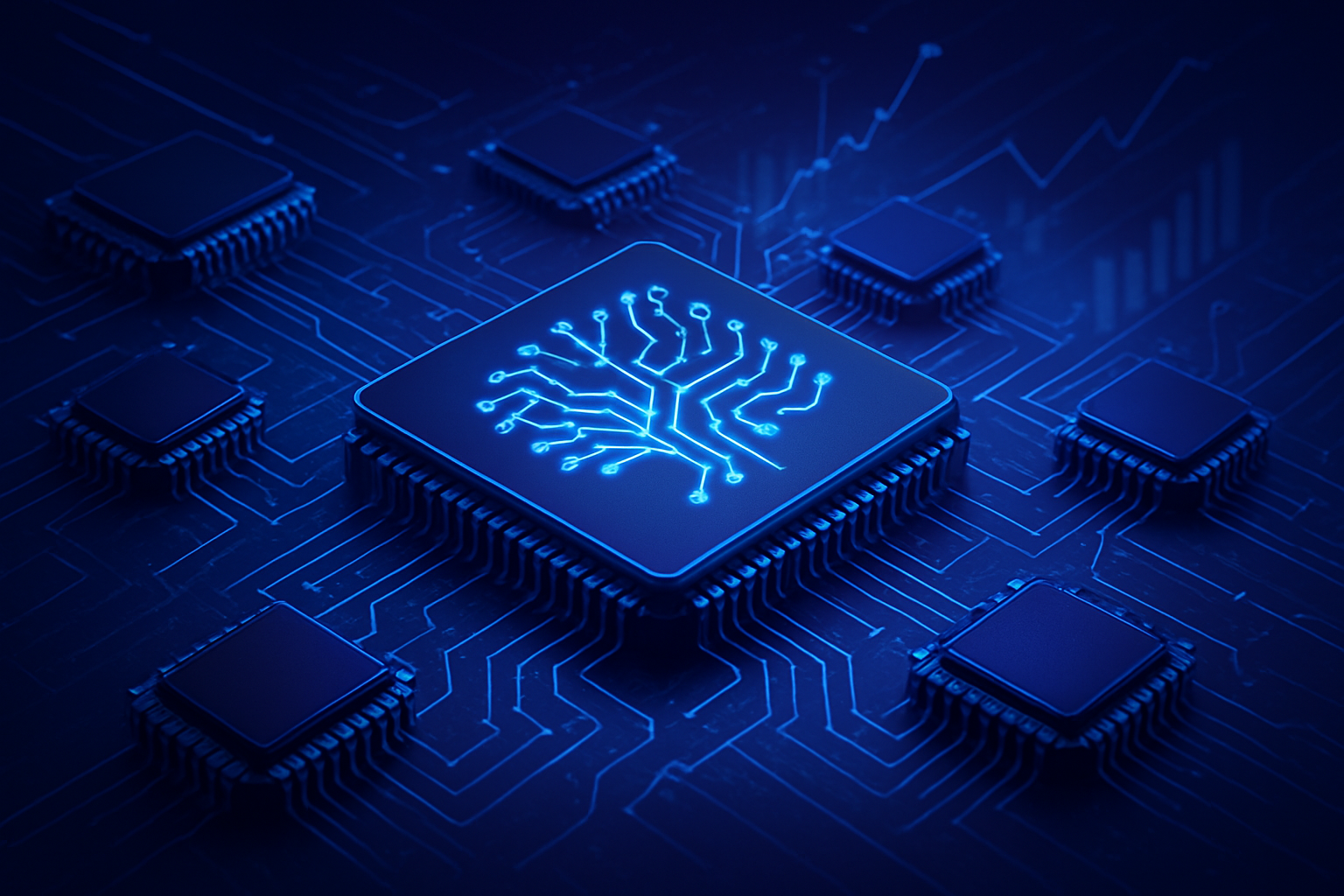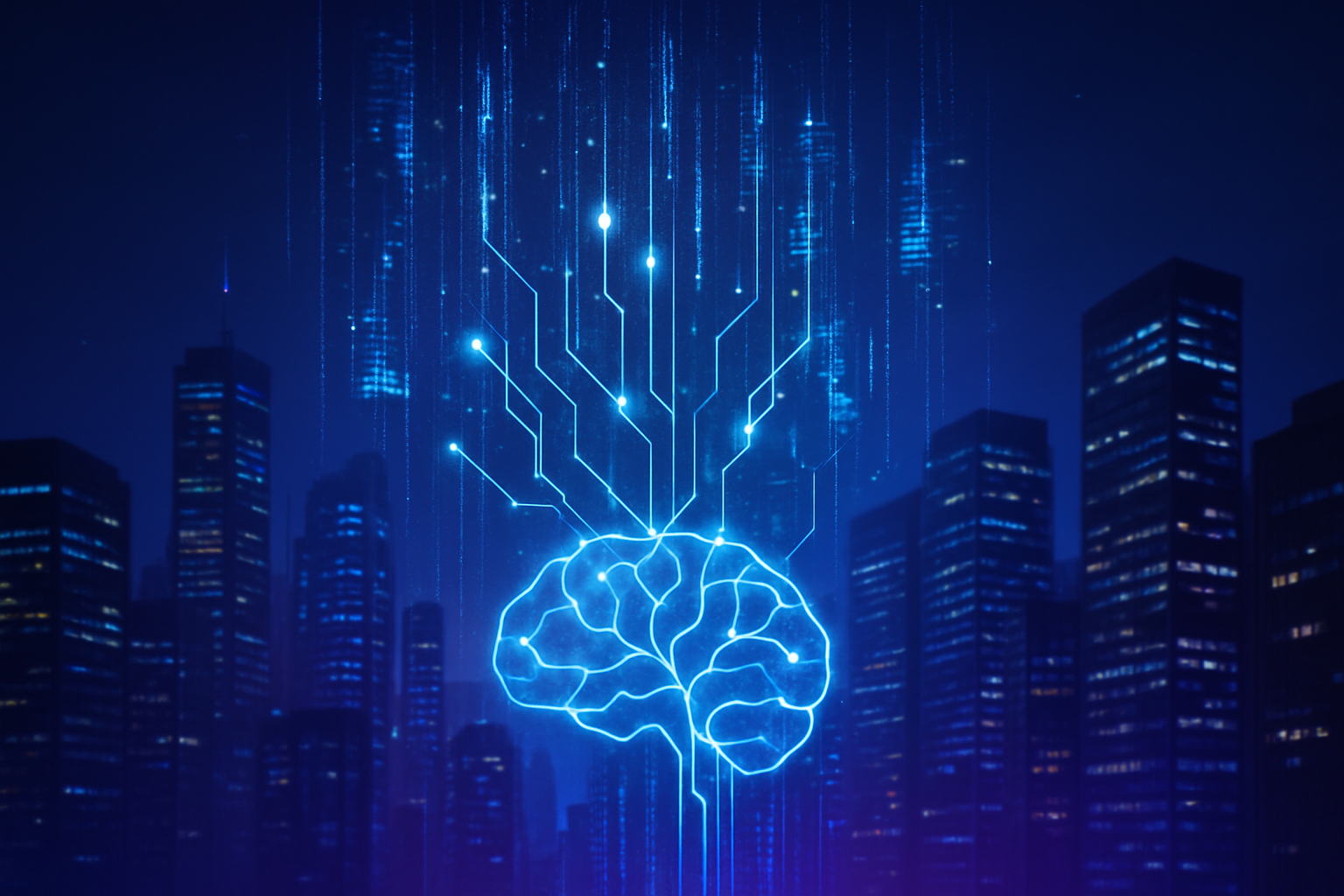The semiconductor industry finds itself at a pivotal juncture in late 2025, experiencing an unprecedented surge in demand primarily fueled by the relentless march of artificial intelligence (AI) and high-performance computing (HPC). This AI-driven boom has propelled market valuations to dizzying heights, sparking both fervent optimism for sustained expansion and a cautious re-evaluation of potential market overextension. As the sector grapples with dynamic shifts in demand, persistent geopolitical influences, and a relentless pursuit of technological innovation, the future of semiconductor valuation and market dynamics remains a topic of intense scrutiny and strategic importance.
The current landscape is characterized by a delicate balance between exponential growth prospects and the inherent risks associated with elevated stock prices. A recent "risk-off" sentiment in early November 2025 saw a significant sell-off in AI-related semiconductor stocks, trimming approximately $500 billion in global market value. This volatility has ignited debate among investors and analysts, prompting questions about whether the market is undergoing a healthy correction or signaling the early stages of an "AI bubble" at risk of bursting. Despite these concerns, many strategists maintain that leading tech companies, underpinned by robust fundamentals, may still offer relative value.
The Technological Engine: AI, Advanced Packaging, and Next-Gen Manufacturing Drive Innovation
The current semiconductor boom is not merely a market phenomenon; it is deeply rooted in profound technological advancements directly addressing the demands of the AI era. Artificial intelligence stands as the single most significant catalyst, driving an insatiable appetite for high-performance processors, graphics processing units (GPUs), and specialized AI accelerators. Generative AI chips alone are projected to exceed $150 billion in sales in 2025, a substantial leap from the previous year.
Crucial to unlocking the full potential of these AI chips are innovations in advanced packaging. Technologies like Taiwan Semiconductor Manufacturing Company's (TSMC) (NYSE: TSM) CoWoS (chip-on-wafer-on-substrate) are becoming indispensable for increasing chip density, enhancing power efficiency, and overcoming the physical limitations of traditional chip design. TSMC, a bellwether in the industry, is projected to double its advanced packaging production capacity in 2025 to meet overwhelming demand. Simultaneously, the industry is aggressively pushing towards next-generation manufacturing processes, with 2nm technology emerging as a critical frontier for 2025. Major wafer manufacturers are actively expanding facilities for mass production, laying the groundwork for even more powerful and efficient chips. This also includes the nascent but promising development of neuromorphic designs, which aim to mimic the human brain's functions for ultra-efficient AI processing.
Furthermore, the memory market, while historically turbulent, is witnessing exponential growth in High-Bandwidth Memory (HBM). HBM is essential for AI accelerators, providing the massive data throughput required for complex AI models. HBM shipments are forecast to surge by 57% in 2025, driving significant revenue growth within the memory segment and highlighting its critical role in the AI hardware stack. These integrated advancements—from specialized AI chip design and cutting-edge manufacturing nodes to sophisticated packaging and high-performance memory—collectively represent a paradigm shift from previous approaches, enabling unprecedented computational capabilities that are the bedrock of modern AI. Initial reactions from the AI research community and industry experts underscore the transformative potential of these technologies, recognizing them as fundamental enablers for the next generation of AI models and applications.
Competitive Battlegrounds: Who Stands to Benefit and the Shifting Landscape
The current semiconductor landscape presents a dynamic battleground where certain companies are poised for significant gains, while others face the imperative to adapt or risk disruption. Companies at the forefront of AI chip design and manufacturing are the primary beneficiaries. NVIDIA (NASDAQ: NVDA), a leader in GPU technology, continues to dominate the AI accelerator market. However, competitors like Advanced Micro Devices (NASDAQ: AMD) (NASDAQ: AMD) are also demonstrating robust revenue growth, particularly with their MI300X AI accelerators, indicating a healthy and intensifying competitive environment.
Foundries like TSMC (NYSE: TSM) are indispensable, with their advanced manufacturing capabilities for 2nm chips and CoWoS packaging being in overwhelming demand. Their strong Q3 2025 earnings are a testament to their critical role in the AI supply chain. Other players in the advanced packaging space and those developing specialized memory solutions, such as Samsung Electronics (KRX: 005930) and SK Hynix (KRX: 000660) in the HBM market, also stand to benefit immensely. The competitive implications are clear: companies that can innovate rapidly in chip architecture, manufacturing processes, and integrated solutions will solidify their market positioning and strategic advantages.
This development could lead to potential disruption for companies reliant on older or less efficient chip architectures, particularly if they fail to integrate AI-optimized hardware into their product offerings. Tech giants like Google (NASDAQ: GOOGL), Amazon (NASDAQ: AMZN), and Microsoft (NASDAQ: MSFT), heavily invested in cloud computing and AI services, are both major consumers and, in some cases, developers of custom AI silicon, further shaping the demand landscape. Startups focusing on niche AI accelerators or novel chip designs also have an opportunity to carve out market share, provided they can secure access to advanced manufacturing capacities. The market is shifting towards an era where raw computational power, optimized for AI workloads, is a key differentiator, influencing everything from data center efficiency to the capabilities of edge devices.
Wider Significance: AI's Foundational Shift and Global Ramifications
The current boom in semiconductor valuation and innovation is not an isolated event but a foundational shift within the broader AI landscape. It underscores the transition of AI from a theoretical concept to a tangible, hardware-intensive reality. This development fits into the larger trend of pervasive AI integration across all sectors, from enterprise data centers to consumer devices and critical infrastructure. The impacts are far-reaching, enabling more sophisticated AI models, faster data processing, and the development of entirely new applications previously constrained by computational limits.
However, this rapid advancement also brings potential concerns. The debate over an "AI bubble" highlights the risk of speculative investment outpacing real-world, sustainable value creation. Geopolitical tensions, particularly regarding semiconductor manufacturing and export controls (e.g., U.S. restrictions on AI chips to China), continue to exert significant influence on market dynamics, spurring substantial onshore investments. The U.S. CHIPS Act and Europe's Chips Act, allocating approximately $1 trillion for onshore investments between 2025 and 2030, are direct responses to these concerns, aiming to diversify supply chains and reduce reliance on single manufacturing hubs.
Comparisons to previous AI milestones reveal a distinct difference. While earlier breakthroughs often focused on algorithmic advancements, the current era emphasizes the symbiosis of software and hardware. The sheer scale of investment in advanced semiconductor manufacturing and design for AI signifies a deeper, more capital-intensive commitment to the technology's future. The potential for talent shortages in highly specialized fields also remains a persistent concern, posing a challenge to the industry's sustained growth trajectory. This current phase represents a global race for technological supremacy, where control over advanced semiconductor capabilities is increasingly equated with national security and economic power.
Future Horizons: What Lies Ahead for the Semiconductor Industry
Looking ahead, the semiconductor industry is poised for continued robust growth and transformative developments. Market projections anticipate the sector reaching a staggering $1 trillion by 2030 and potentially $2 trillion by 2040, driven by sustained AI demand. Near-term developments will likely see the full commercialization and mass production of 2nm chips, further pushing the boundaries of performance and efficiency. Innovations in advanced packaging, such as TSMC's CoWoS, will continue to evolve, enabling even more complex and powerful multi-chip modules.
On the horizon, potential applications and use cases are vast. Beyond current AI training and inference in data centers, expect to see more powerful AI capabilities integrated directly into edge devices, from AI-enabled PCs and smartphones to autonomous vehicles and advanced robotics. The automotive industry, in particular, is a significant growth area, with demand for automotive semiconductors expected to double from $51 billion in 2025 to $102 billion by 2034, fueled by electrification and autonomous driving. The development of neuromorphic designs, mimicking the human brain's architecture, could unlock entirely new paradigms for energy-efficient AI.
However, several challenges need to be addressed. Geopolitical complexities will continue to shape investment and manufacturing strategies, requiring ongoing efforts to build resilient and diversified supply chains. The global competition for skilled talent, particularly in advanced chip design and manufacturing, will intensify. Experts predict that the industry will increasingly focus on vertical integration and strategic partnerships to navigate these complexities, ensuring access to both cutting-edge technology and critical human capital. The push for sustainable manufacturing practices and energy efficiency will also become paramount as chip density and power consumption continue to rise.
A Comprehensive Wrap-Up: AI's Hardware Revolution Takes Center Stage
In summary, the semiconductor industry is undergoing a profound transformation, with artificial intelligence serving as the primary engine of growth. Key takeaways include the unprecedented demand for AI-optimized chips, the critical role of advanced manufacturing (2nm) and packaging (CoWoS) technologies, and the exponential growth of HBM. While market valuations are at an all-time high, prompting careful scrutiny and recent volatility, the underlying technological advancements and evolving demand across data centers, automotive, and consumer electronics sectors suggest a robust future.
This development marks a significant milestone in AI history, solidifying the understanding that software innovation must be paired with equally revolutionary hardware. The current era is defined by the symbiotic relationship between AI algorithms and the specialized silicon that powers them. The sheer scale of investment, both private and public (e.g., CHIPS Act initiatives), underscores the strategic importance of this sector globally.
In the coming weeks and months, market watchers should pay close attention to several indicators: further developments in 2nm production ramp-up, the continued performance of AI-related semiconductor stocks amidst potential volatility, and any new announcements regarding advanced packaging capacities. Geopolitical developments, particularly concerning trade policies and supply chain resilience, will also remain critical factors influencing the industry's trajectory. The ongoing innovation race, coupled with strategic responses to global challenges, will ultimately determine the long-term impact and sustained leadership in the AI-driven semiconductor era.
This content is intended for informational purposes only and represents analysis of current AI developments.
TokenRing AI delivers enterprise-grade solutions for multi-agent AI workflow orchestration, AI-powered development tools, and seamless remote collaboration platforms.
For more information, visit https://www.tokenring.ai/.



